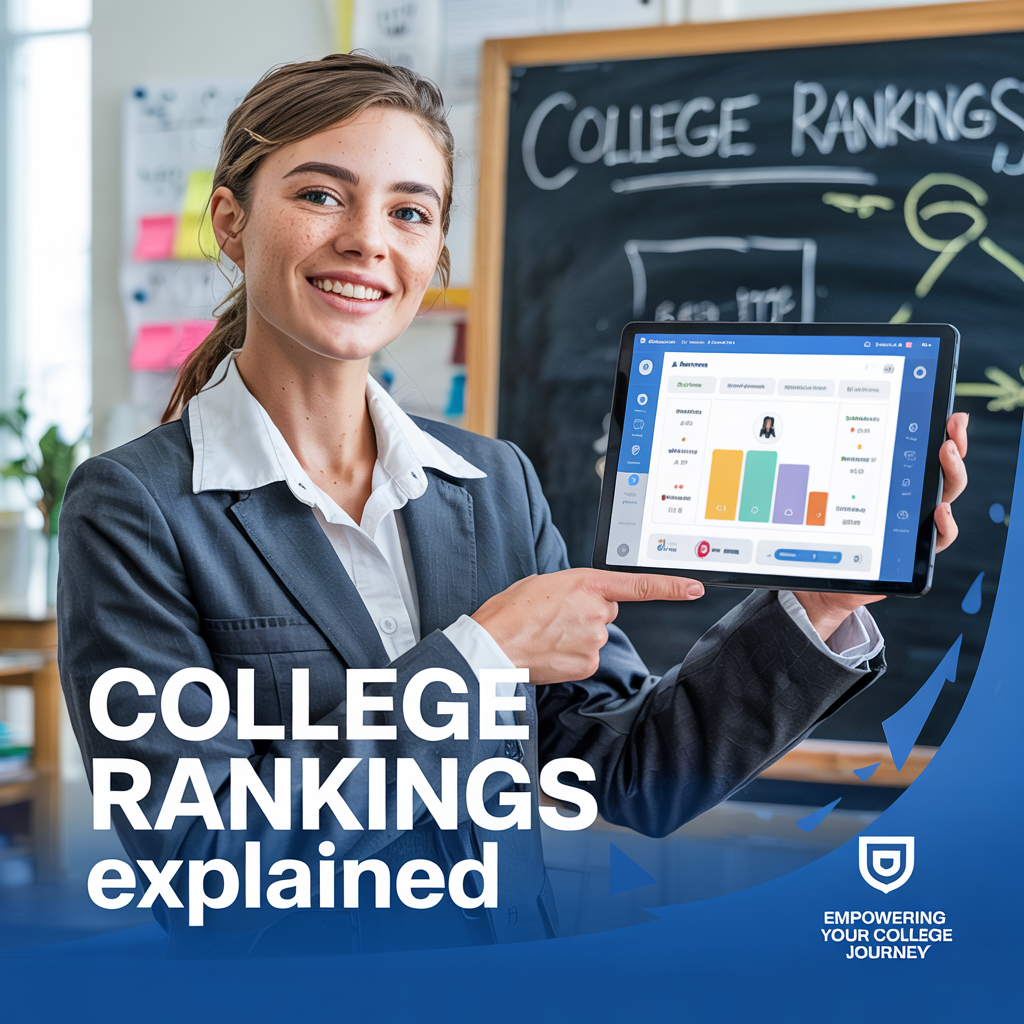Decoding College Rankings: Using Them Wisely (and When to Ignore Them)

College rankings seem to be everywhere. Lists published by U.S. News & World Report, Forbes, and others get a lot of attention. It’s tempting to think a higher rank automatically means a “better” school. But college rankings explained properly show they have significant flaws and shouldn’t be the main factor in your decision. Let’s look at how they work, their limitations, and how to use them as just one small part of your college research tools.
💡 Want a smarter way to build your college list based on your interests and achievements? Try Cirkled In to showcase the real you beyond rankings.
What Are College Rankings Trying to Measure?
Different rankings use different formulas, but they often try to quantify factors like:
- Academic reputation (surveys of administrators and counselors)
- Student selectivity (GPA, test scores of incoming students)
- Faculty resources (class size, faculty salary)
- Graduation and retention rates
- Financial resources (spending per student)
- Alumni giving
- Sometimes, outcomes like graduate debt or salaries (more recent trend)
The goal is usually to create a single list ordering schools from “best” to “worst” based on these combined factors.
The Big Players (U.S. News, Forbes, etc.) and Their Methods
- U.S. News & World Report: The most famous ranking. Historically heavily weighted reputation surveys and selectivity metrics. Their methodology changes slightly over time.
- Forbes: Tends to focus more on outcomes like alumni salaries, student debt, and career success.
- Princeton Review, etc.: Often focus more on student reviews, campus life, and specific aspects like “best dorms” or “party schools.” These are less about overall academic rank and more about student experience.
It’s important to realize each list measures different things and weights them differently.
Major Problems with College Rankings
Critics point out many flaws in popular ranking systems:
- Subjectivity: Reputation surveys are opinions, not objective measures of quality.
- Gaming the System: Colleges can sometimes manipulate data (e.g., encouraging more applications to appear more selective) to improve their rank.
- Ignores “Fit”: Rankings don’t measure if a college is the right fit for your learning style, interests, career goals, or personality.
- Privileges Wealth: Factors like financial resources and alumni giving favor wealthier institutions.
- Doesn’t Measure Teaching Quality: It’s very hard to quantify how well professors actually teach or mentor students.
- Creates False Precision: Is #17 really significantly “better” than #19? Small differences in rank often mean very little in reality.
- Limited Scope: They often ignore crucial factors like campus culture, student support services, location, and specific departmental strengths.
There are many reasons to look beyond college rankings. These lists highlight problems with college rankings that students and families should know.
How Should You Use College Rankings? (If At All)
Rankings aren’t totally useless, but they should be used cautiously as just one data point among many. Here’s how to use college rankings wisely:
- Discovering Schools: Use them initially to discover names of colleges you might not have heard of within certain categories (e.g., top public universities, best liberal arts colleges in a region).
- Comparing Basic Data (Sometimes): They can provide a quick (though sometimes flawed) comparison of factors like average class size or graduation rates if you take it with a grain of salt.
- Ignoring Small Differences: Don’t sweat the difference between #25 and #35. Focus on tiers or broad categories if you use them at all.
- NEVER as Your Only Source: They should be a tiny part of your research, not the driving force.
Factors to Consider Beyond College Rankings
Focus your research on what actually matters for finding the right college fit:
- Academic Programs: Does the college have strong programs in your areas of interest? Look at specific department websites.
- Campus Culture & Environment: What’s student life like? Visit (if possible) or attend virtual sessions. Read student reviews (on sites like Niche, but critically). Is it competitive or collaborative? Urban or rural?
- Teaching Style: Do you prefer lectures or small discussions? Research-focused or teaching-focused faculty?
- Support Services: What resources are available for academic help, career counseling, mental health?
- Cost & Financial Aid: Use the Net Price Calculator What scholarships are available?
- Location & Size: Do you want a big city or small town? Large university or small college?
- Career Outcomes: What career services does the college offer? Where do graduates end up working or going to grad school (check LinkedIn, department websites)?
📌 Organize all your achievements, activities, and interests in one place with Cirkled In—your personalized college application companion.
Final Thought: Focus on Fit, Not Just Rank
College rankings explained clearly show their limitations. While they might offer a starting point for discovery, they fail to capture the factors that truly determine if a college is right for you. Look beyond college rankings. Focus your energy on deep research into academic programs, campus culture, support services, and affordability. Finding the best college is about finding the best fit, not just the highest number on a list.
Need more tips on college applications, scholarships, or just how to survive this whole process? Cirkled In has your back—check out Cirkled In resources to help you through every step of your college journey!
Check out Cirkled In and start owning your future today!



0 Comments